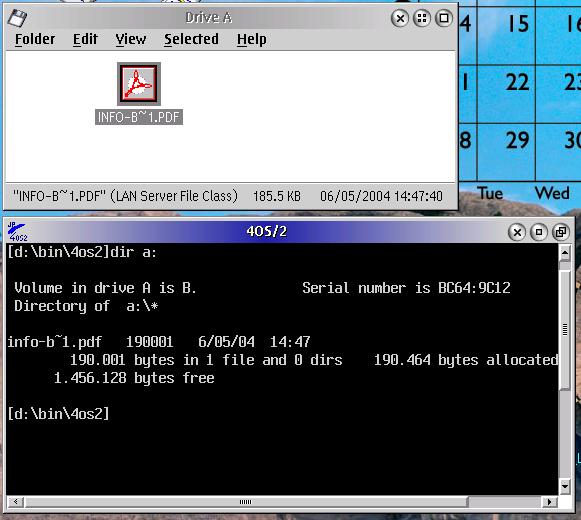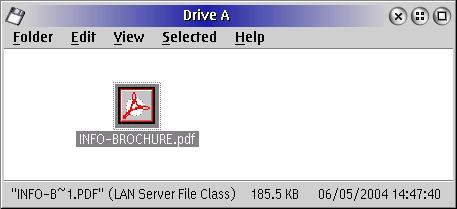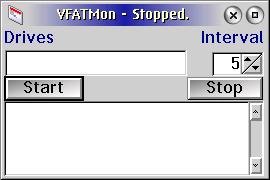
June 16, 2004
John Bijnens is a CAD/CAM engineer in the KHLim - Dep. IWT which is some kind of technical university in Belgium. He gives training in Pro/E and also writes CNC postprocessors (all development is done on OS/2.)
If you have a comment about the content of this article, please feel free to vent in the OS/2 e-Zine discussion forums.
There is also a Printer Friendly version of this page.
|
Previous Article |
|
Next Article |

VFAT
I guess you are all familiar with the situation where a Windows using colleague comes to you with a floppy to which he has written some files with long filenames using his Windows system. When you try to read the floppy with an OS/2 - eCS system you can't see the long filenames but instead you see some cryptic filenames. This situation can be solved with the aid of a small program vfat2ea written by Doodle. This article will discuss vfat2ea and a handy add-on vfat2mon written by Jason Stefanovich which automates the use of vfat2ea.Installation
Installation is very straightforward. Both vfat2ea and vfat2mon come as zip files. You can download these zip files vfat2ea and vfat2mon from hobbes. Unzip these files in a directory you want the software to install in. The latest vfat2mon.zip file contains both vfat2ea.exe and vfat2mon.exe so if you want to use vfat2ea through vfat2mon you only have to download this file.Usage
If you have a floppy which contains files with long filenames you'll have the
following view in Windows

When you access the floppy using the WPS or a command window in OS/2 - eCS you'll
see

There are two options to solve this problem.
You can use vfat2ea by typing the following command in a command window
vfat2ea a:vfat2ea will now scan the floppy and convert the long file names to extended attributes. As the FAT file system doesn't support the extended attributes that are used by OS/2, these extended attributes are stored in a file called 'ea data.sf'. The consequence of this is that you won't see the long file names in a command prompt but you will be able to see the long file names in the WPS.

If we copy some files with long file names from our eCS system to the floppy by using drag & drop in the WPS. However, Windows won't be able to recognize these file names as they are stored in the file 'ea data.sf'. You can convert the long file names stored in the extended attributes back to the vfat system by typing the following command in a command window
vfat2ea a: /bIn case you don't like to use vfat2ea at the command prompt every time you want to read a floppy that is written on a Windows system or want to prepare a floppy you have copied some files to on your eCS system for use on your Windows system you can try to automate things by using vfat2mon. To use it just start vfat2mon.exe. You'll get the following screen

Now start monitoring drive A: by typing A: in the entry field 'Drives' and pressing on the Start button. Now vfat2mon will try to read your floppy drive and issue the vfat2ea command every 5 seconds. At least that is what it is intended to do but I was never able to get it to work. So I hope you are more lucky.
And then
As always don't forget that this free software is developed by the authors in their spare time so send a sign of life and your appreciation to the authors. This way they know their work is valued very much and it will give a stimulation to develop new versions.If anything isn't working as expected don't start to yell but try to provide the author with a full reproducible error report so he is able to correct the problem in case of a bug.
And then it is up to you.
Give vfat2ea and vfat2mon a try.
|
Previous Article |
|
Next Article |